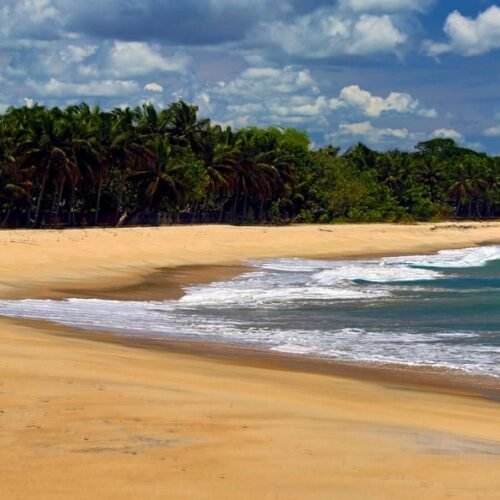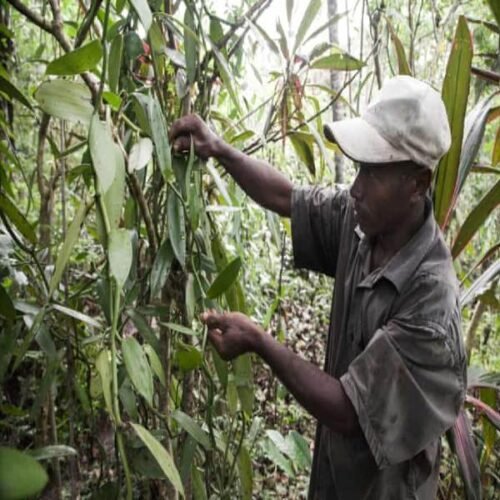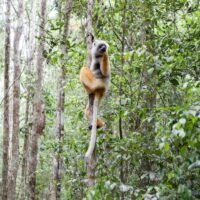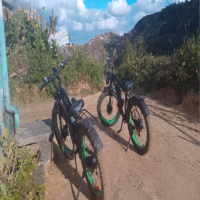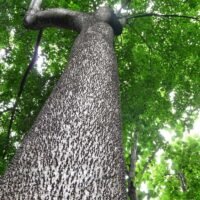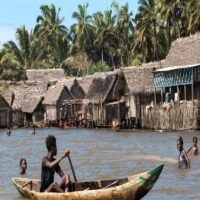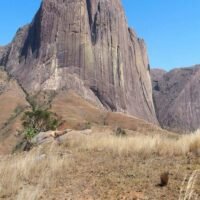Sambava: Where Rivers Converge and Vanilla Thrives
Sambava takes its name from the Malagasy term “Sahambavany,” which translates to “where rivers flow into the sea after meeting.” Geographically, this makes perfect sense: three rivers reach their estuaries at Sambava, which also happens to be a crossroads linking three roads—one northward to Vohémar, one westward to Andapa, and one southward to Antalaha. Strategically and symbolically, Sambava has long been a point of connection, shaping both its cultural and economic identity.
A Vanilla Capital with Global Recognition
Sambava is world-renowned as the capital of “Bourbon vanilla,” regarded by connoisseurs as one of the finest varieties on the planet. Traditionally cultivated in the surrounding fertile lands and rainforests, this vanilla once sold at under €100 per kilo in 2015; by 2019, the price had soared to between €400 and €500 per kilo. In 2021, it settled at around €300 per kilo. The fluctuation is strongly tied to crop yields and the intensity of cyclones. Sambava frequently experiences tropical storms, especially between January and February—events that can devastate plantations, reduce supply, and drive prices higher in global markets.
Though vanilla stands as Sambava’s most famous export, coffee, cloves, and coconuts also benefit from the area’s abundant rainfall and naturally humid climate. The convergence of these diverse crops makes Sambava a key economic hub in the SAVA region (Sambava, Antalaha, Vohémar, Andapa), an area often dubbed the “vanilla triangle.”
Historical Roots: From the Time of Radama I to the French Colonial Era
Radama I and Early Military Posts
During the early 19th century, Radama I—King of Imerina—led campaigns to unify the eastern and northern regions of Madagascar under his rule. Around 1860, a small military outpost was established near Antalaha to strengthen Merina influence. Rising insecurity prompted local communities in what is now Sambava to request additional protection from the royal government in Antananarivo. Eventually, authorities opened a station in Ampandrozonana, located about three kilometers from present-day Sambava.
French Colonization and Administrative Changes
Following France’s annexation of Madagascar in 1896, the colonial administration rapidly reorganized local governance. In 1897, Lieutenant Gillet moved the district command headquarters to Sambava, transforming the town from a modest settlement into a regional administrative center. This shift attracted laborers, traders, and settlers, all of whom sought new opportunities in the fertile lands surrounding Sambava.
The Spread of Vanilla and Other Crops
In the early 20th century, vanilla cultivation (introduced from Réunion Island) took off, joined by coffee farms that thrived in the humid climate. Together, these high-value crops fueled economic growth. However, the wealth generated by vanilla production was—and remains—unevenly distributed; many small-scale farmers see limited gains, while a handful of larger businesses and exporters benefit more significantly.
Still, the region’s climate provides ideal conditions not only for vanilla but also for coffee, cloves, and coconut palms. Over time, these crops diversified Sambava’s economy beyond subsistence agriculture, ensuring that the region became—and stayed—one of Madagascar’s agricultural powerhouses.
Cyclones and Economic Vulnerability
Cyclones pose a continual challenge for Sambava and its surroundings. The months of January and February in particular bring intense storms, strong winds, and heavy rainfall. Infrastructure, such as roads and bridges, often sustains damage, hampering travel and trade. The vanilla industry can suffer heavy losses if cyclones hit at a critical time in the growing or drying process, leading to price spikes worldwide. As a result, local authorities and international NGOs have begun introducing more resilient cultivation methods and improved emergency response strategies to lessen the impact on communities and crops.
What to See and Do in Sambava
For travelers, Sambava offers a mix of agricultural, cultural, and eco-tourism experiences:
-
Coconut Plantations & Vanilla Processing Centers
Vast coconut plantations surround Sambava, providing scenic drives and leisurely walks. Visitors can also tour various vanilla curing and processing facilities, where they’ll see the careful steps involved in creating this prized spice—from hand-pollination and harvest to blanching, drying, and packaging. -
Gateway to Marojejy National Park
Sambava is the primary jumping-off point for two- or three-day excursions into Marojejy National Park. Known for its towering peaks, lush rainforest, and incredible biodiversity—including several species of lemurs—Marojejy appeals to nature enthusiasts and seasoned hikers alike. -
Exploring Masoala National Park via Antalaha & Cap Est
Adventurous travelers can set out from Sambava toward Antalaha and Cape East (Cap Est) en route to Masoala National Park. This journey takes you through remote coastal landscapes, dense forests, and remote villages rich in local customs.
Preserving a Cultural and Natural Legacy
Sambava’s story unfolds at the intersection of culture, agriculture, and nature. From its early days as a Merina military post to its transformation under French colonial rule and modern-day status as the global “capital of Bourbon vanilla,” Sambava has adapted to centuries of change. Yet the town remains vulnerable to cyclones and uneven economic development—issues that continue to shape local livelihoods.
Nevertheless, Sambava stands as a testament to Madagascar’s resilient spirit. Its rivers, roads, and farmland converge in a single location, reflecting a broader Malagasy narrative of cultural fusion, economic ingenuity, and enduring natural beauty. Visitors who arrive in Sambava—whether to sample its world-class vanilla, learn about its storied past, or embark on a rainforest adventure—will find themselves in a place where tradition and modernity meet, and where the influence of history lingers amid the vibrant fields of clove and vanilla.
